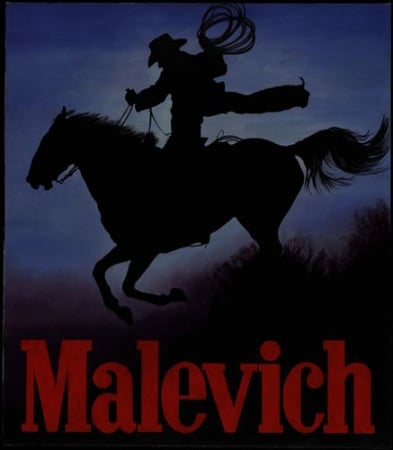Lost in translation

“Lost in translation” è l’esposizione dedicata all’arte russa degli ultimi quaranta anni. Diverse le «lenti» utilizzate per seguirne l’evoluzione: aspetti storici, politici, sociali ed economici.
Comunicato stampa
“Lost in translation” è l’esposizione dedicata all’arte russa degli ultimi quaranta anni. Diverse le «lenti» utilizzate per seguirne l’evoluzione: aspetti storici, politici, sociali ed economici. Tutti elementi fondamentali del processo di «traduzione» di un’opera d’arte nell’età della globalizzazione. La mostra presenta quei lavori che sono particolarmente difficili da decifrare per un pubblico che non ha familiarità con il «contesto russo» nel quale queste opere sono state pensate e al quale rimandano.
Tutti i lavori sono esposti insieme alla loro «traduzione espansa» che individua e spiega i riferimenti essenziali per ottenere la migliore comprensione del messaggio racchiuso da ciascuna delle 100 opere esposte (tele, sculture, grafica, installazioni, video) realizzati da 62 artisti. È prevista un'installazione di Alexander Ponomarev nel cortile minore di Ca’ Foscari. La mostra, allestita a Ca’ Foscari Esposizioni, è a cura di Antonio Geusa, MMOMA Moscow Museum of Modern Art, in collaborazione con il Centro Studi sulle Arti della Russia CSAR dell’ateneo veneziano, il cui principale obiettivo è lo studio del patrimonio storico e culturale della Russia e la promozione di scambi con le principali istituzioni culturali russe.
In Russia a poet is more than a poet
Yevgeny Yevtushenko
As part of the Collateral Events of the 55th International Art Exhibition — La Biennale di Venezia — Moscow Museum of Modern Art presents «Lost in Translation», a large-scale exhibition of contemporary Russian art exploring the inherent untranslatability of culture-and context-dependent works in times of globalization. The exhibition brings together over one hundred works made in the past forty years from the collection of MMOMA and other public and private collections.
Since its formulation about half a century ago, the concept of global village has evolved from theoretical potentiality into practical reality. Technological development has made international communication simpler and faster. The wide web the world has become today has strongly curtailed the power of geographic, political, and economic borders to isolate. Although the village is global, it is clearly not homogeneous. Communicating has become easier, but its effectiveness is still dependent upon clear understanding between communicators. To achieve clarity, the main factor is the accuracy of translation from one language into another. Art is not immune to the need of being translated. A process of transfer is in act each time a work of art is exhibited to the audience which is not familiar with the context it comes from. Historical and political differences, cultural diversities, the language barrier, or even dissimilar approaches in theoretical analysis are some of the causes that can induce lack of intelligibility and the need of further explanation.
Contemporary history proves that, despite the fall of the Iron Curtain in December 1991 and the consequent end of the isolation and immediate entrance of Russia into the global village, translation is still a fundamental element to trigger proper understanding of individual artworks and the layers of meaning they carry. In many cases, this is a complex procedure requiring, besides the plain translation of the verbal meaning of a message, the addition of an explanatory account shedding light upon the given historical, cultural, political, social, and economical environment the work is motivated by and refers to. Artist Oleg Kulik gained worldwide popularity after doing a series of his «man-dog» performance in the 1990s. It would be easier to grasp his outrageous artistic disguise should one interpret it in the context of the radical economic reforms launched by Russia’s first president Boris Yeltsin; the reforms described as «shock therapy,» which was aimed at converting the whole country from socialism to capitalism. Likewise, the context would make it easier to understand why the popular Soviet TV series The Seventeen Moments of Spring (1973) was a source of inspiration for several Russian modern artists while meaning virtually nothing to the Western viewer.
Lost in Translation draws together works executed in various media — paintings, drawings, photographs, sculptures, videos, installations, performances — by established Russian artists with international acclaim as well as emerging young artists. Carefully selected by the curator on the basis of their resistance to translatability, these artworks are particularly difficult to decipher without the basic knowledge of the «Russian context» they were born in. They will be displayed together with their «expanded translation» — a concise verbal account with essential references, a thesaurus article of sorts, which facilitates readability and help the viewers grasp the meaning of the work and relate it to international contemporary art discourse. The exhibition is accompanied by a fully illustrated catalogue with entries on each exhibit, and is complemented with film screenings, talks, performances, and a multidisciplinary conference.
The exhibition is held at Ca’ Foscari University, an established center for Slavic Studies in Italy, and the home of the CSAR Centre for Studies on the Arts of Russia aimed at researching the historical and cultural heritage of Russia and promoting exchanges with major Russian cultural institutions.
PARTICIPATING ARTISTS
Yuri Albert | Nikita Alekseev | Sergey Anufriev | Bluesoup |Sergey Bratkov | Alexander Brodsky | Erik Bulatov | Vladimir Dubossarsky and Alexander Vinogradov | Elena Elagina | Semen Faybisovich | Andrey Filippov | Rimma and Valery Gerlovin | Lyudmila Gorlova | Iced Architects | Dmitry Gutov | Anna Jermolaewa | Alisa Joffe | Ilya Kabakov | Vitaly Komar and Alexander Melamid | Irina Korina | Valery Koshlyakov | Alexander Kosolapov | Oleg Kulik | Sergey Leontiev | Anton Litvin | Vladimir Logutov | Igor Makarevich | Vladislav Mamyshev-Monroe | Andrei Monastyrsky | Semen Motolyanets | Vladimir Nemukhin | Timur Novikov | Boris Orlov | Peppers | Pavel Peppershtein | Viktor Pivovarov | Alexander Ponomarev | Gia Rigvava | Mikhail Roginsky | Yuri Shabelnikov | Sergey Shutov | Leonid Sokov | Alena Tereshko | Avdey Ter-Oganyan | Vadim Zakharov | Konstantin Zvezdochetov | and others
ANTONIO GEUSA
CURATOR
Dr. Antonio Geusa is an independent curator, art critic, and lecturer; he is an expert in new media art and a key researcher of Russian video art. He holds an MA in philology (University of Bari, Italy), and a PhD in media arts (London University, U. K.). Dr. Geusa is the author of numerous publications, including «The History of Russian Video Art. Volumes 3-2-1» published on the occasion of a three-part exhibition under the same name organized by MMOMA in 2007-2010. He lives and works in Moscow, Russia.



